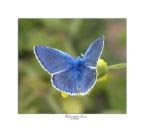








YOU WILL NEED
Clear jar with lid (the taller the better)
Water
Food coloring
Glitter
Vegetable oil
Salt
Flashlight
Fill the jar three-quarters full of water. Add drops of food coloring until you like the color you see. A few drops go a long way! Sprinkle in glitter for extra sparkle. Fill the jar almost to the top with vegetable oil and let the mixture separate. Pour salt into the jar until you see the lava effect. When the bubbles stop, add more salt to see it again. Shine a flashlight behind the jar to watch your lava lamp really glow!
Clear jar with lid (the taller the better)
Water
Food coloring
Glitter
Vegetable oil
Salt
Flashlight
Fill the jar three-quarters full of water. Add drops of food coloring until you like the color you see. A few drops go a long way! Sprinkle in glitter for extra sparkle. Fill the jar almost to the top with vegetable oil and let the mixture separate. Pour salt into the jar until you see the lava effect. When the bubbles stop, add more salt to see it again. Shine a flashlight behind the jar to watch your lava lamp really glow!
EXPLANATION: The secret behind the lamp’s “lava” is science. Oil is lighter, or less dense, than water, so it rises to the surface. Salt is heavier, or more dense, than water, and sinks to the bottom. When you add the salt, blobs of oil attach to the grains and sink. Then the salt dissolves, and the oil returns to the top. The result? A liquid show for the eyes.
NECESITARÁS
1 Pote de cristal con su tapa (cuanto más alta mejor)
Agua
Colorante alimenticio para repostería
Purpurina
Aceite
Sal
Una linterna
Rellena el 3/4 del pote con agua. Añade gotas del colorante hasta que te guste el color que ves. Unas cuantas gotas serán suficientes! Echa purpurina para que brille más. Rellena el pote con el aceite y deja que se separen los líquidos. Echa sal hasta que consigas el efecto 'lava'. Cuando las burbujas cesen, añade más sal para volver a ver el efecto. Enciende una linterna y colócala detrás del pote para ver cómo brilla tu lámpara de lava.
Explicación: La respuesta la tiene la ciencia. El aceite es más ligero, o menos denso, que el agua y flota sobre ésta. La sal es más pesada, o más densa, y se hunde hasta el fondo. Al añadir la sal, los granos capturan el aceite y hacen que se hunda. Cuando la sal se disuelve, el aceite vuelve a la superficie. ¿El resultado? Un espectáculo visual.























1 comentario:
WaaauuuW,esta también la copio!!!
Publicar un comentario